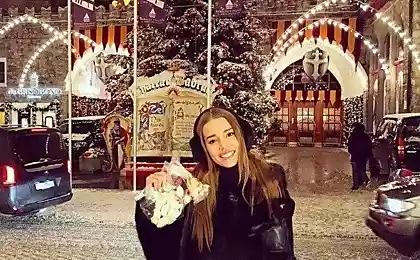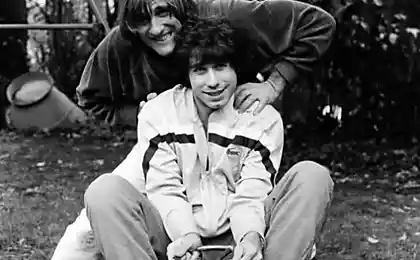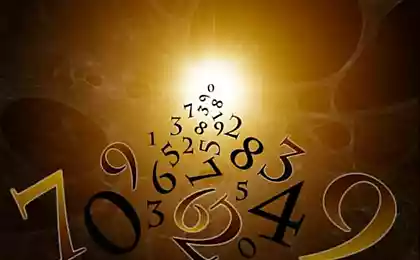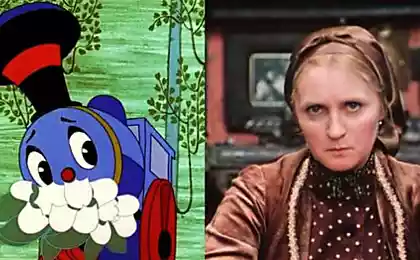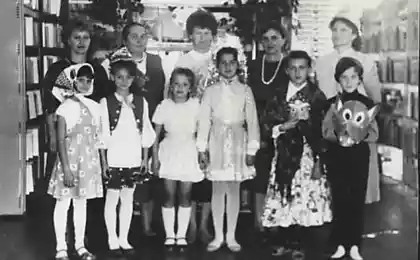1430
Interesting Christmas Facts
There are many legends about the Christmas tree, or associated with the spirit of the place where the spirit lives,
and - with the legends of the Tree of Life and the Tree of Knowledge of Good and Evil.

The hero of the most popular legends became the leader of the German Reformation, Martin Luther. Once
Christmas Eve he was walking home through the woods. The night was clear and starry. When he came home, he put
Christmas tree for your family and a lot of candles stuck to her thick branches. The lights on it looked like
stars in the sky.
There is a legend about why we decorate the Christmas tree tinsel shiny silver.
Once upon a time there lived a good poor woman who had many children. In the evening before Christmas
She had dressed Christmas tree, but she had very little jewelry. At night on the tree visited by spiders and crawling with
branch to branch, branches left on her web. As a reward for kindness female infant Christ blessed
tree and turned into a web of glittering silver.
There is a theory that first invented Santa Claus Huns: they had a god Yerli, who in the very first
day of the year came to earth. This day was supposed to put a Christmas tree in their homes, as the Huns spruce considered
a sacred tree. It turns out, therefore, that this tradition already 5000 years. Huns, and brought it to Europe.
Then they were crushed and were only in Bavaria, where he lived until the XVI century, no one mingling. It
Bavarian Christmas tree "has come" to all European countries.

The first decorated Christmas tree appeared in the territory of modern France in Alsace; According to historians, it was
in 1605. Chronicle testifies: "At Christmas, here installed in the homes of trees and their branches hang rose
out of colored paper, apples, biscuits, sugar and bits of tinsel. " A large area of the German Protestant community
Württemberg took over this novelty. Slowly this tradition spread throughout Germany, and then - and throughout Europe.
However, the first Christmas tree appeared only in the homes of wealthy nobles and merchants. Decorated with a variety of toys in
medieval Germany is not only trees but also pines, branches of cherry trees and beech trees. The first glass Christmas ball was
blown in Thuringia (Saxony) in the 16th century. Industrial production of Christmas decorations started only in the middle of last
century - here in Saxony. Skilled craftsmen toys blown glass, cut out of cardboard bells, hearts,
figurines of birds and animals, balls, cones, nuts, which are then painted with bright colors.
Everywhere installed in the homes of Christmas trees began relatively recently - in the 19th century. It was then that evergreen,
curvy ladies became regularly established in the royal palaces and the king of France, Germany, England, Norway,
Denmark and Russia. Property of the tree was the common people only in the second half of the 19th century.
In Russia, the New Year has been celebrated by the decree of Peter the Great to January 1, 1700. Before that marked the beginning of a new year 1
September. The decree of Peter I said: "As noble and carriageways streets and houses of the gates to inflict some jewelry from Ancient
and branches of pine, spruce and juniper, to repair the firing of small guns and rifles, lobbing rockets and starting fires.
A lean people each at least on the tree or branch to put on collars. " This holiday Christmas tree (although Peter the Great
tree not adorned and decorated legs, twigs), decoration and carnivals are very fond of the Russian people.
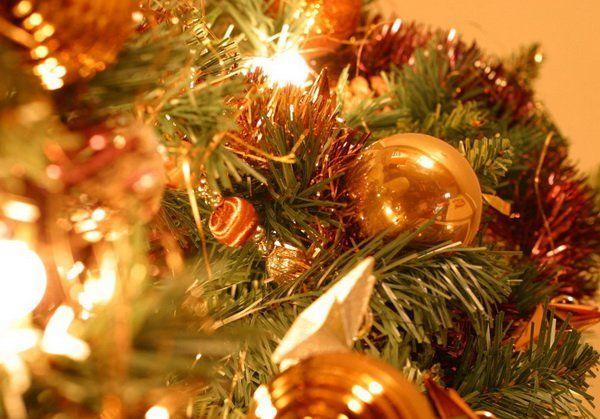
In 30-ies of the XIX century, Christmas trees were placed on a holiday only in the homes of the St. Petersburg Germans. Publicly trees in the capital staged
only in 1852. By the end of the XIX century it became the main decoration of the Christmas tree and town and village houses, and in the XX century began
inseparable from the winter holidays. But in 1916, the Christmas tree on Russian soil were in disgrace. As during
World War II the nobility abandoned the language of Napoleon, as the imperialist Holy Synod called patriots
do not put in the homes of thorny trees, because they came to us from the German traditions.
In 1918, on Christmas tree took up arms against the Soviet power - but as a bourgeois prejudice. The Christmas story was not
no Santa Claus or the Snow Maiden winter mermaid - missed first trimester virgin waters. Only one religion: crib, the star of Bethlehem, the choir
angels and divine miracles, sent only to the good children. Nevertheless, many people continued to celebrate Christmas in secret.
Korma addition, remained pagan tradition - caroling at Christmas time.

Christmas tree remained banned until 1935, when the idea: not to celebrate Christmas and the New Year. Bethlehem
five-pointed star was red, and under the trees ornate the country by order of Stalin, along with Santa Claus greeted 1935 by
Christmas. But on January 1 it became a day off only in 1949.
In general, the tradition of decorating the Christmas tree is very old, more than 2,000 years. In the past people thought that all the trees are endowed with good strength,
that they live in good spirits. People tried to appease these spirits, hanging on the trees treats and gifts. Evergreen fir
He ranked among the trees a special place: it was a sacred center, the "world tree", symbolizing life itself and the new
the revival of the darkness and gloom. Previously, instead of toys were hung on trees of different fruit trees, such as:
Apples - a symbol of fertility,
Nuts - incomprehensibility of the divine Providence,
egg - a symbol of emerging life, full of harmony and well-being.

In England at the court of Henry VIII in 1516 it was put up Christmas tree made of gold, decorated with roses and pomegranates. And before that in England
on the eve of Christmas (this custom has been preserved till now) it was decided to decorate the house with holly (thistle), ivy and mistletoe (honeysuckle).
In the Midlands it was thought that if the first branch of holly, entering the house, would barbed - for
Year to dominate in the house to be the owner, and if the leaves are smooth - the hostess. It was believed that holly witch scares.
The custom of kissing under the mistletoe branch also originated in England. Whenever a young couple kissing under a branch, the youth
He plucked a berry; When berries are ended, and ended with kisses. Now when decorating rooms bunches of mistletoe has even
lamps and chandeliers, and, as usual, you can kiss a man standing in the middle of the room under a bunch of mistletoe.
In Scandinavian countries, the mistletoe is the protagonist of the New Year holiday. Its branches are usually covered with a red and a "silver»
paint, hang them stylized image of two hearts and ribbons adorn.

In France, Napoleon I's brother Jerome Bonaparte, King of Westphalia as dress up the Christmas tree with gift bright letters,
and his courtiers, favorites had to shoot them. The first tree was installed in France in the Tuileries Gardens. Until now, in France,
Provence on the Christmas tree tradition hang brightly painted eggshells.
and - with the legends of the Tree of Life and the Tree of Knowledge of Good and Evil.

The hero of the most popular legends became the leader of the German Reformation, Martin Luther. Once
Christmas Eve he was walking home through the woods. The night was clear and starry. When he came home, he put
Christmas tree for your family and a lot of candles stuck to her thick branches. The lights on it looked like
stars in the sky.
There is a legend about why we decorate the Christmas tree tinsel shiny silver.
Once upon a time there lived a good poor woman who had many children. In the evening before Christmas
She had dressed Christmas tree, but she had very little jewelry. At night on the tree visited by spiders and crawling with
branch to branch, branches left on her web. As a reward for kindness female infant Christ blessed
tree and turned into a web of glittering silver.
There is a theory that first invented Santa Claus Huns: they had a god Yerli, who in the very first
day of the year came to earth. This day was supposed to put a Christmas tree in their homes, as the Huns spruce considered
a sacred tree. It turns out, therefore, that this tradition already 5000 years. Huns, and brought it to Europe.
Then they were crushed and were only in Bavaria, where he lived until the XVI century, no one mingling. It
Bavarian Christmas tree "has come" to all European countries.

The first decorated Christmas tree appeared in the territory of modern France in Alsace; According to historians, it was
in 1605. Chronicle testifies: "At Christmas, here installed in the homes of trees and their branches hang rose
out of colored paper, apples, biscuits, sugar and bits of tinsel. " A large area of the German Protestant community
Württemberg took over this novelty. Slowly this tradition spread throughout Germany, and then - and throughout Europe.
However, the first Christmas tree appeared only in the homes of wealthy nobles and merchants. Decorated with a variety of toys in
medieval Germany is not only trees but also pines, branches of cherry trees and beech trees. The first glass Christmas ball was
blown in Thuringia (Saxony) in the 16th century. Industrial production of Christmas decorations started only in the middle of last
century - here in Saxony. Skilled craftsmen toys blown glass, cut out of cardboard bells, hearts,
figurines of birds and animals, balls, cones, nuts, which are then painted with bright colors.
Everywhere installed in the homes of Christmas trees began relatively recently - in the 19th century. It was then that evergreen,
curvy ladies became regularly established in the royal palaces and the king of France, Germany, England, Norway,
Denmark and Russia. Property of the tree was the common people only in the second half of the 19th century.
In Russia, the New Year has been celebrated by the decree of Peter the Great to January 1, 1700. Before that marked the beginning of a new year 1
September. The decree of Peter I said: "As noble and carriageways streets and houses of the gates to inflict some jewelry from Ancient
and branches of pine, spruce and juniper, to repair the firing of small guns and rifles, lobbing rockets and starting fires.
A lean people each at least on the tree or branch to put on collars. " This holiday Christmas tree (although Peter the Great
tree not adorned and decorated legs, twigs), decoration and carnivals are very fond of the Russian people.

In 30-ies of the XIX century, Christmas trees were placed on a holiday only in the homes of the St. Petersburg Germans. Publicly trees in the capital staged
only in 1852. By the end of the XIX century it became the main decoration of the Christmas tree and town and village houses, and in the XX century began
inseparable from the winter holidays. But in 1916, the Christmas tree on Russian soil were in disgrace. As during
World War II the nobility abandoned the language of Napoleon, as the imperialist Holy Synod called patriots
do not put in the homes of thorny trees, because they came to us from the German traditions.
In 1918, on Christmas tree took up arms against the Soviet power - but as a bourgeois prejudice. The Christmas story was not
no Santa Claus or the Snow Maiden winter mermaid - missed first trimester virgin waters. Only one religion: crib, the star of Bethlehem, the choir
angels and divine miracles, sent only to the good children. Nevertheless, many people continued to celebrate Christmas in secret.
Korma addition, remained pagan tradition - caroling at Christmas time.

Christmas tree remained banned until 1935, when the idea: not to celebrate Christmas and the New Year. Bethlehem
five-pointed star was red, and under the trees ornate the country by order of Stalin, along with Santa Claus greeted 1935 by
Christmas. But on January 1 it became a day off only in 1949.
In general, the tradition of decorating the Christmas tree is very old, more than 2,000 years. In the past people thought that all the trees are endowed with good strength,
that they live in good spirits. People tried to appease these spirits, hanging on the trees treats and gifts. Evergreen fir
He ranked among the trees a special place: it was a sacred center, the "world tree", symbolizing life itself and the new
the revival of the darkness and gloom. Previously, instead of toys were hung on trees of different fruit trees, such as:
Apples - a symbol of fertility,
Nuts - incomprehensibility of the divine Providence,
egg - a symbol of emerging life, full of harmony and well-being.

In England at the court of Henry VIII in 1516 it was put up Christmas tree made of gold, decorated with roses and pomegranates. And before that in England
on the eve of Christmas (this custom has been preserved till now) it was decided to decorate the house with holly (thistle), ivy and mistletoe (honeysuckle).
In the Midlands it was thought that if the first branch of holly, entering the house, would barbed - for
Year to dominate in the house to be the owner, and if the leaves are smooth - the hostess. It was believed that holly witch scares.
The custom of kissing under the mistletoe branch also originated in England. Whenever a young couple kissing under a branch, the youth
He plucked a berry; When berries are ended, and ended with kisses. Now when decorating rooms bunches of mistletoe has even
lamps and chandeliers, and, as usual, you can kiss a man standing in the middle of the room under a bunch of mistletoe.
In Scandinavian countries, the mistletoe is the protagonist of the New Year holiday. Its branches are usually covered with a red and a "silver»
paint, hang them stylized image of two hearts and ribbons adorn.

In France, Napoleon I's brother Jerome Bonaparte, King of Westphalia as dress up the Christmas tree with gift bright letters,
and his courtiers, favorites had to shoot them. The first tree was installed in France in the Tuileries Gardens. Until now, in France,
Provence on the Christmas tree tradition hang brightly painted eggshells.
